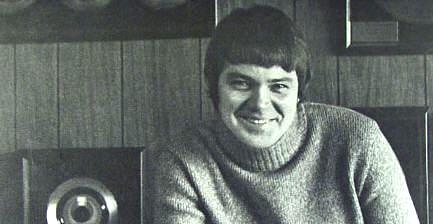
Discover more about Bill Drake (1937 – 2008), pictured here. His is the one name which is most frequently mentioned with the Boss Radio format.
You have arrived at the online companion to KHJ Los Angeles: Boss Radio Forever — 1960s Rock and Roll Radio History in the Neon Fun Jungle written by Woody Goulart (updated August 2025) available from Amazon in digital format.
Continue to Boss Radio Inner Workings.
Boss Radio Links:
Boss Radio Forever (main page)
Archives of Boss Radio Forever
Boss Radio Inner Workings
College Radio KCPR
Gallery of Photographs
Hollywood Rock and Roll Radio
KHJ Music
KHJ Timeline
My Work in the Radio Industry
Studying Radio
Back to top of page.
https://www.facebook.com/pages/Tina-Delgado-Is-Alive-Alive/317649558253559
I love your site and audio sample, thanks for preserving them for those of us who consider Boss Radio the best format ever.